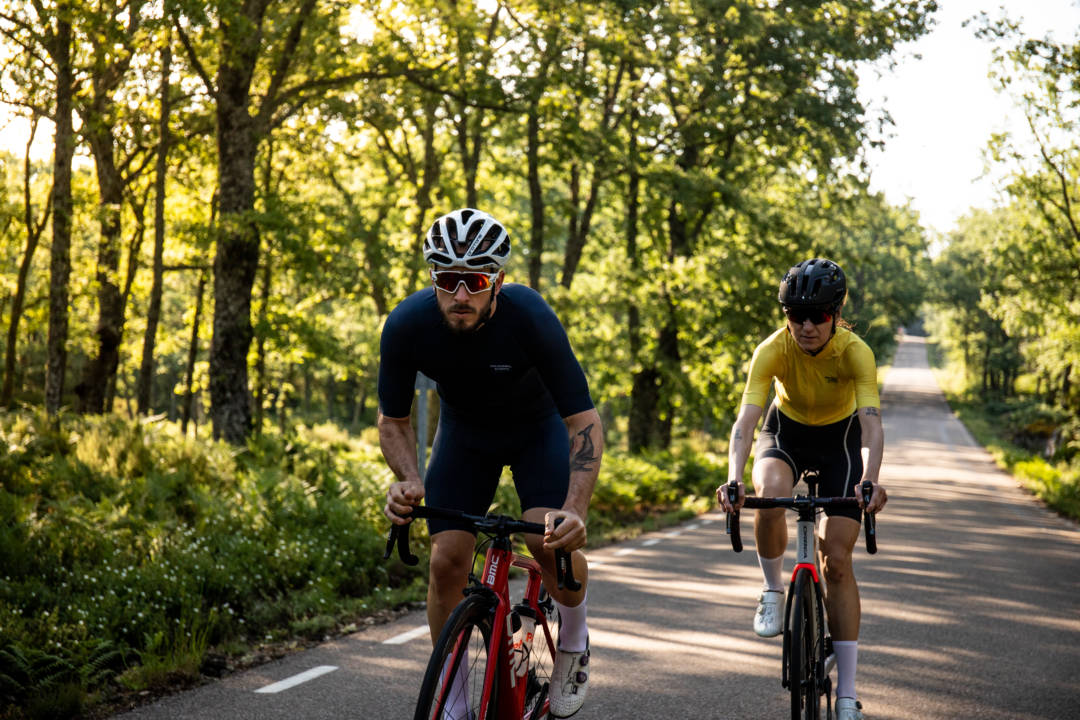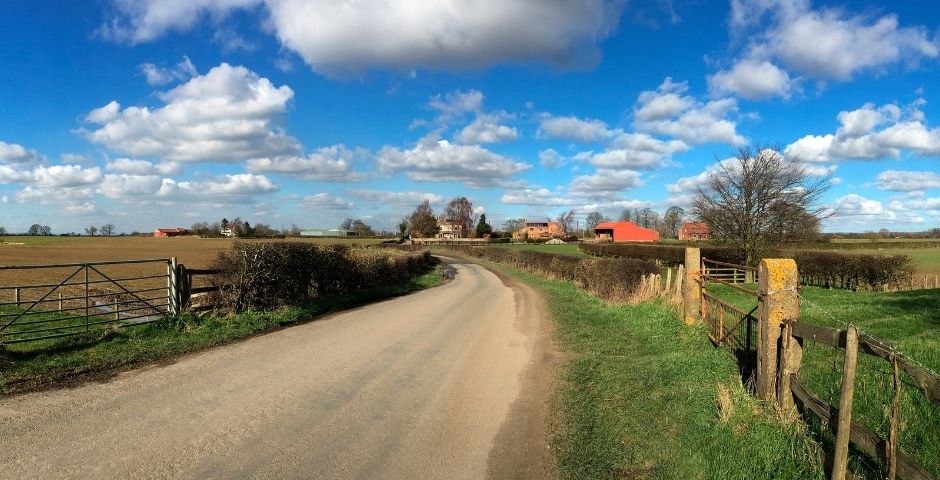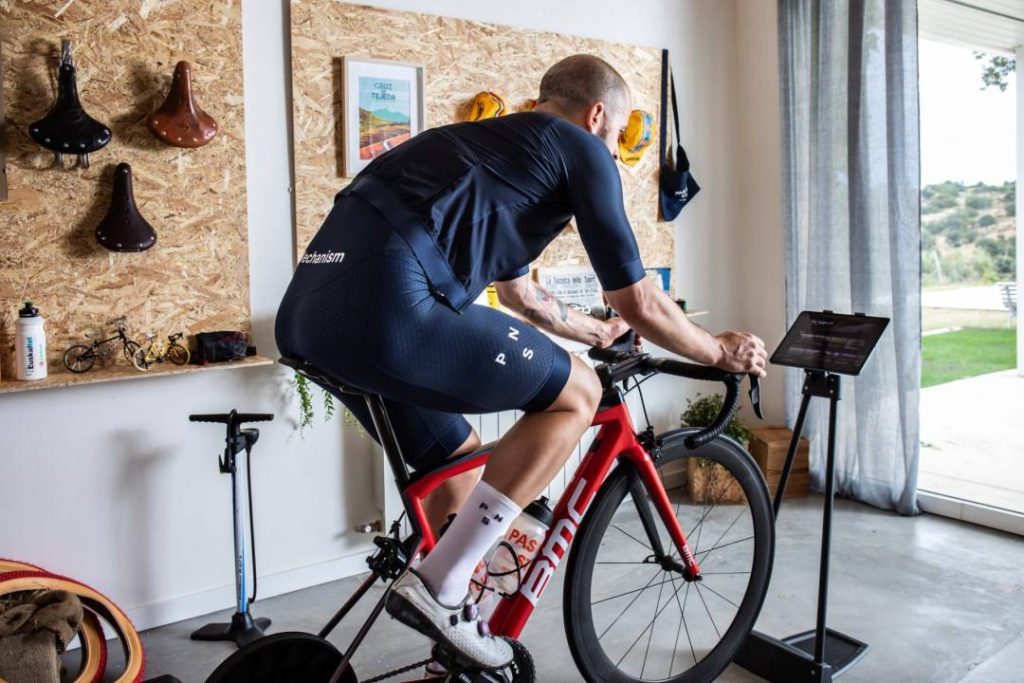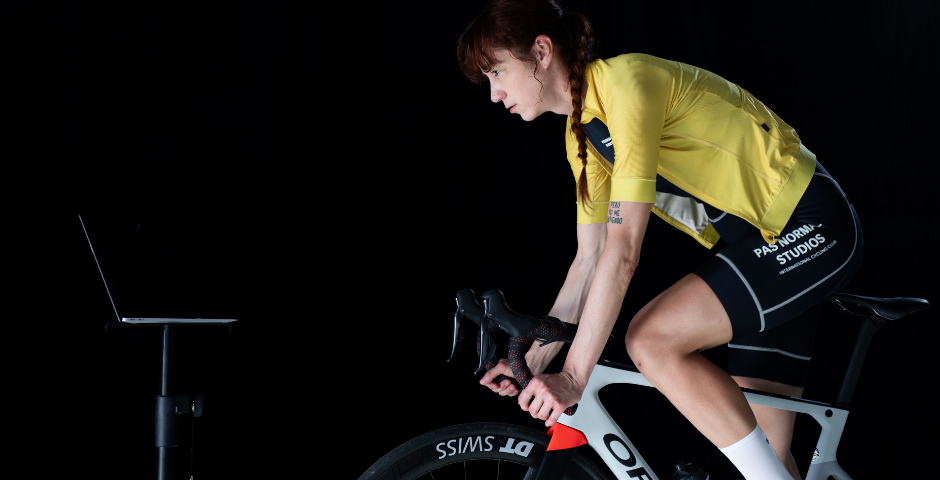Your body has three energy production systems that you tap into when exercising. Intensity and duration are what determine which of these pathways acts as the main source: the phosphagen or ATP-PC system, the glycolytic or anaerobic system, or the oxidative or aerobic system.
Since cycling is an endurance sport, your body uses the aerobic system as your primary method of generating fuel. However, there are times when cycling requires all of our power-generating capacity to keep up with the demands of the sport.
What is the neuromuscular power zone?
The neuromuscular power zone encompasses very short, very high intensity efforts. These generally affect the musculoskeletal system more than the metabolic system.
In theory, the neuromuscular power zone uses the phosphocreatine or ATP-PC energy system. This is the fastest way to provide energy and power to muscles working at maximal efforts of less than fifteen seconds.
The neuromuscular power zone uses stored ATP and creatine phosphate (CP) to create energy anaerobically.
Why does the neuromuscular power zone matter in cycling?
The neuromuscular power zone comes into play when you need an immediate source of energy. Examples include attacks, starts or short sprints that require immediate, maximum power.
Because this power zone is only accessed for a very short interval, the total time spent in it is much less than in the other zones. However, the situations where the neuromuscular power zone is needed are often critical and decisive in competition.
The amount of neuromuscular power available is limited, and rest or low intensity riding is required afterward. That’s why the maximum power of your sprint is reduced after successive attempts. It’s also why you want to limit your time in the neuromuscular power zone so it’s accessible at the most decisive moments.
A good way to understand neuromuscular power is to look at it like a high-power battery: it produces a lot of energy and doesn’t last long, but it is rechargeable with a little rest.
How much exactly? It depends. The rate at which creatine phosphate is replenished depends on the degree of exhaustion, muscle acidosis and the type of muscle fiber.
This means that your body will have difficulty replenishing both creatine phosphate and ATP if reserves are greatly depleted or muscle acidosis is high.
Neuromuscular training for cycling: improving your maximum power output
A more prepared aerobic system can influence recovery time. If you have a good aerobic engine, you will be rewarded with more neuromuscular power: the higher the aerobic capacity, the less dependent you’ll be on the other two systems. You’ll be able to save that maximum power for when it’s needed most.
On the other hand, the best way to develop good neuromuscular power is to increase efficiency. To do this, combine strength training sessions and pedaling technique exercises. Improving torque and cadence will help increase your production of maximum power.
Examples of neuromuscular training
- Pistons: these are sprints that start from a standing position. Choose the hardest gear you can turn over, applying maximum possible force without exceeding 90 rpm in 12 pedal strokes. Perform five repetitions of 10 and 12 seconds with plenty of rest in between. This can be done both standing and seated.
- Spin-Ups: this is a simple exercise and a great tool for strengthening neuromuscular pathways, which translates into greater coordination and more efficient motor torque. Choose a medium cadence and increase as quickly as possible. The goal is to go from normal cadence to maximum cadence in the shortest time possible, and maintain it for about ten seconds.
- Long High Cadence: long intervals with a cadence around 100 rpm. This is an ideal exercise for trainer sessions, as it allows you to concentrate on cadence without distraction. Start with sets of 5 to 10 minutes and increase the time progressively as you feel more comfortable.
BKOOL is the most complete cycling simulator on the market, try it FREE for 7 days!
 Go to BKOOL
Go to BKOOL






Bonjour , la présentation est en français cela est une excellente chose, par contre lorsqu’on clique sur la suite tout est en anglais . Il serait très très utile de tout avoir en français
Cordialement
Jean belieres
Bonjour, Jean. Merci beaucoup pour votre suggestion, nous en tenons compte. Nous nous efforçons d’offrir la meilleure communication possible à nos utilisateurs, et nous espérons pouvoir bientôt proposer les articles également en français. Si vous avez besoin de quoi que ce soit d’autre, n’hésitez pas à nous contacter. Nous vous remercions de votre attention.